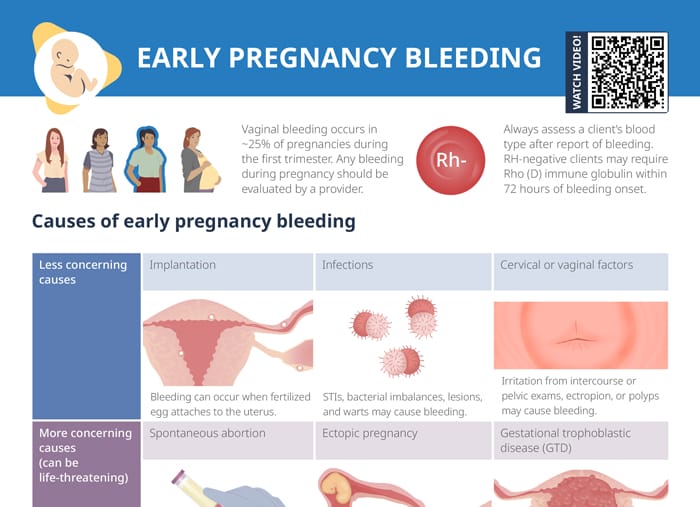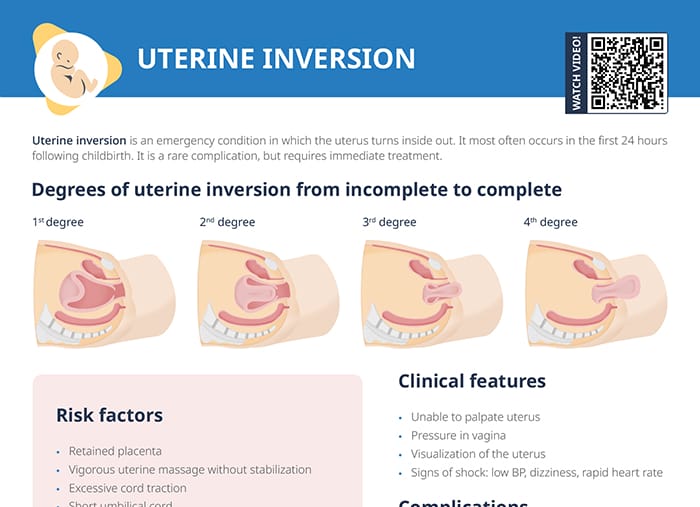What is an inverted uterus?
Uterine inversion is an emergency condition in which the uterus turns inside out. It most often occurs in the first 24 hours following childbirth. It is a rare complication, but requires immediate treatment.
Degrees of uterine inversion
Uterine inversion is classified into 4 degrees of inversion:
- 1st degree: top of uterus collapses in uterine cavity
- 2nd degree: top of uterus passes through cervix
- 3rd degree: inverted uterus extends into vagina
- 4th degree: uterus and vagina protrude outside the body
What is a retroverted uterus?
Retroversion of the uterus is a common anatomic variation where the uterus is tilted backwards towards the spine instead of forward. It does not usually cause any complications with pregnancy.
Uterine inversion vs prolapse
Uterine inversion is an emergency specifically during childbirth where the uterus turns inside out. Uterine prolapse describes a descent of the uterus into or outside the vaginal canal that can be caused by childbirth, but also aging or other factors weakening the surrounding support structures.
Risk factors for uterine inversion
These factors increase the risk of uterine inversion:
- Retained placenta
- Vigorous uterine massage without stabilization
- Excessive cord traction
- Short umbilical cord
- Rapid or prolonged labor
- Medications that relax uterus
- Abnormal placental implantation
Clinical features and complications
Signs and symptoms of an inverted uterus
- Uterus cannot be palpated.
- Client feels pressure in vagina.
- Visualization of the uterus
- Signs of shock: low BP, dizziness, rapid heart rate
Possible complications
Potential severe complications include hemorrhage and shock, tissue necrosis, and can lead to maternal death.
Nursing care and client teachings
Notify the provider if finding signs of an inverted uterus. Also notify anesthesia.
- If infusing oxytocin, stop.
- Start an IV and insert an indwelling catheter.
- Prepare to assist with uterine replacement.
- Draw labs if requested.
With prompt treatment, long-term complications are rare. Still, educate your client that recurrence is possible in future pregnancies, and future providers should be informed about client history.

